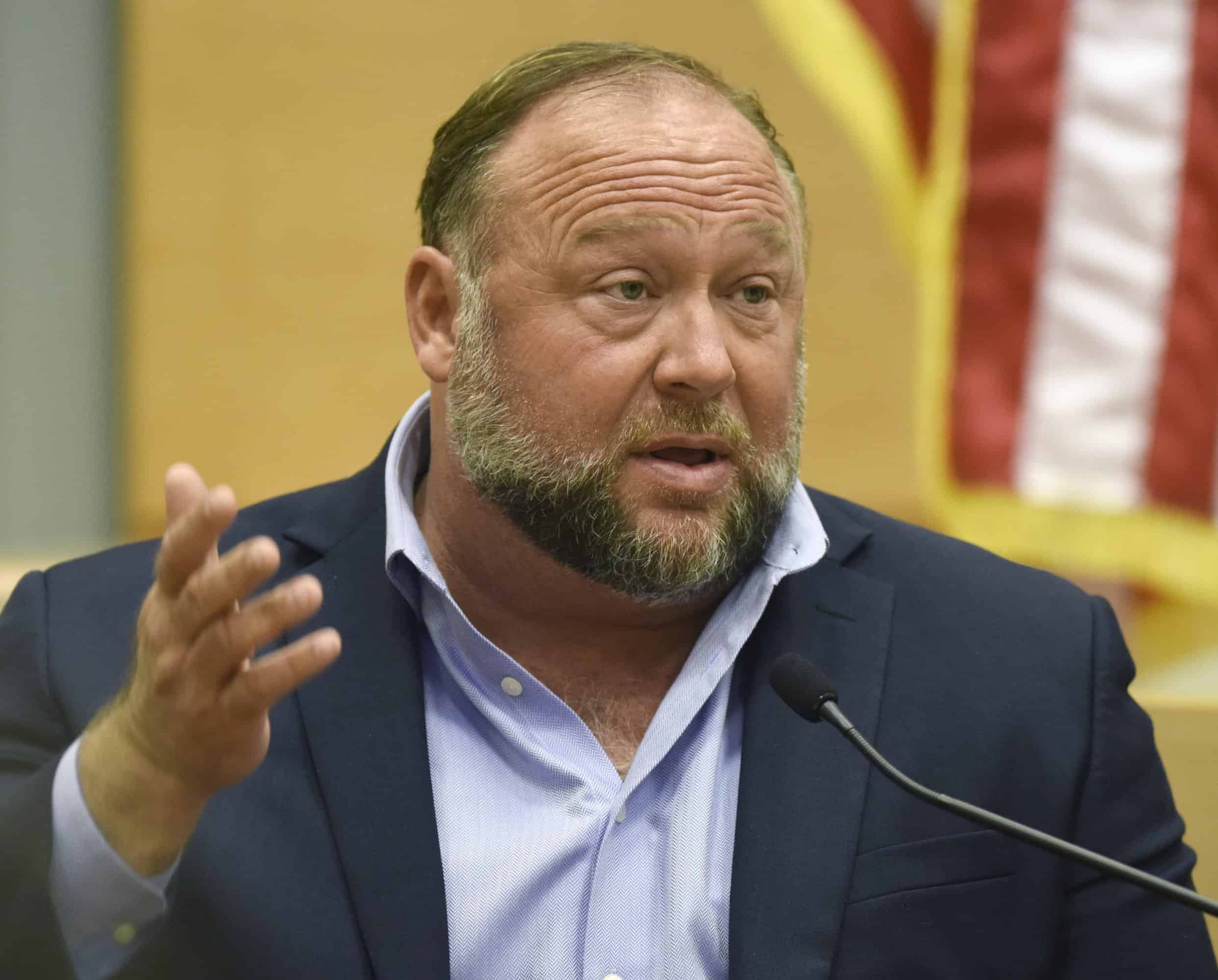
AP
The conspiracy theorist Alex Jones should pay 965 million dollars (£869 million) to people who suffered from his false claim that the Sandy Hook Elementary School shooting was a hoax, a jury in the US decided on Wednesday.
The verdict is the second big judgment against the Infowars host over his relentless promotion of the lie that the 2012 massacre never happened, and that the grieving families seen in news coverage were actors hired as part of a plot to take away people’s guns.
It came in a claim filed by the relatives of five children and three teachers killed in the mass shooting, plus an FBI agent who was among the first emergency services at the scene.
A Texas jury in August awarded nearly 50 million dollars (£45 million) to the parents of another murdered child.
Some plaintiffs hugged in the courtroom after the verdict was read.
Jones was not there, but live video from the court played on a split screen on his Infowars show.
“Hey, folks, don’t go buying big homes,” he said.
The Connecticut trial featured tearful testimony from parents and siblings of the victims, who described how they were threatened and harassed for years by people who believed the lies told on Jones’ show.
Strangers showed up at their homes to record them. People hurled abusive comments on social media.
Erica Lafferty, the daughter of murdered Sandy Hook head teacher Dawn Hochsprung, testified that people posted rape threats to her house.
Mark Barden said conspiracy theorists had urinated on the grave of his seven-year-old son, Daniel, and threatened to dig up the coffin.
Testifying during the trial, Jones acknowledged he had been wrong about Sandy Hook. The shooting was real, he said. But both in the courtroom and on his show, he was defiant.
He called the proceedings a “kangaroo court,” mocked the judge, called the plaintiffs’ lawyer an ambulance-chaser and called the case an affront to free speech rights.
He claimed it was a conspiracy by Democrats and the media to silence him and put him out of business.
“I’ve already said I’m sorry hundreds of times and I’m done saying I’m sorry,” he said during his evidence.
Twenty children and six adults died in the shooting on December 14, 2012.
The defamation trial was held in Waterbury, about 20 miles from Newtown, where the attack took place.
The case accused Jones and Infowars’ parent company, Free Speech Systems, of using the mass killing to build his audience and make millions of dollars.
Experts gave evidence that Jones’ audience swelled when he made Sandy Hook a topic on the show, as did his revenue from product sales.
In both the Texas case and the one in Connecticut, judges found the company liable for damages by default after Jones failed to co-operate with court rules on sharing evidence, including failing to turn over records that might have showed whether Infowars had profited from knowingly spreading misinformation about mass killings.
Because he was already found liable, Jones was barred from mentioning free speech rights and other topics during his evidence.
Jones now faces a third trial, in Texas, at the end of the year, in a claim filed by the parents of another child killed in the shooting.
It is unclear how much Jones can afford to pay.
During the trial in Texas he said he could not afford any judgment over two million dollars (£1.8 million).
Free Speech Systems has filed for bankruptcy protection.
But an economist gave evidence in the Texas proceeding that Jones and his company were worth as much as 270 million dollars (£243 million).
Related: Reports of ‘devastating collapse in confidence’ in Liz Truss among her own MPs